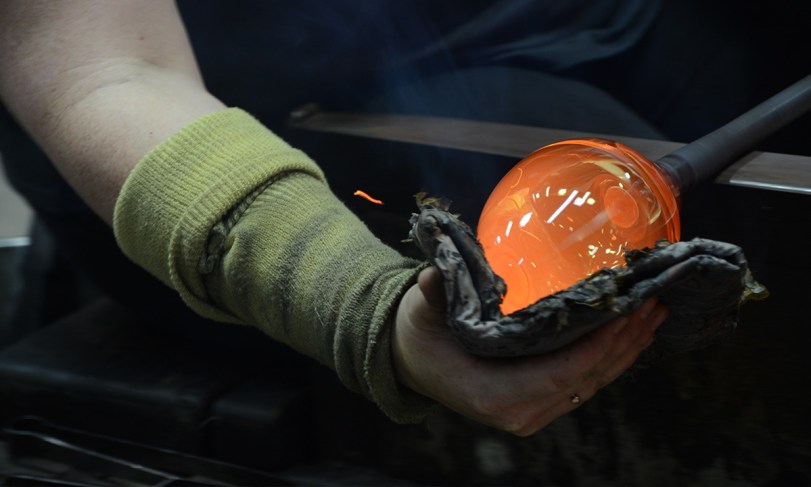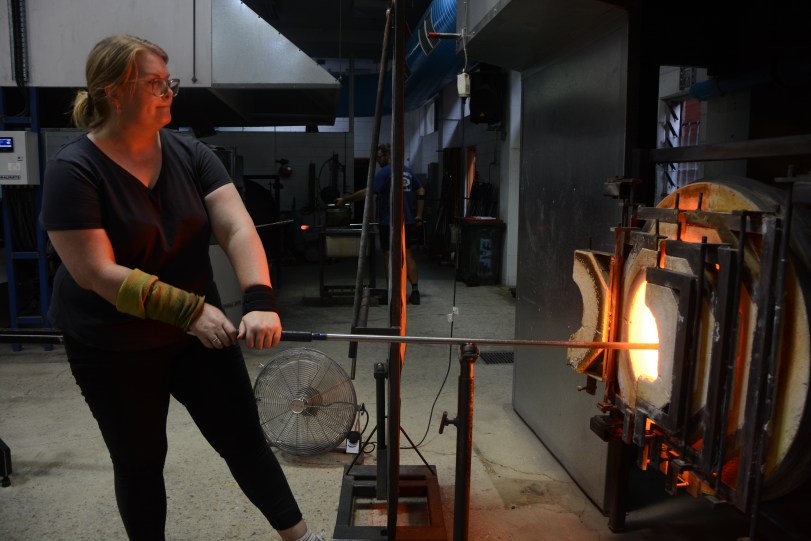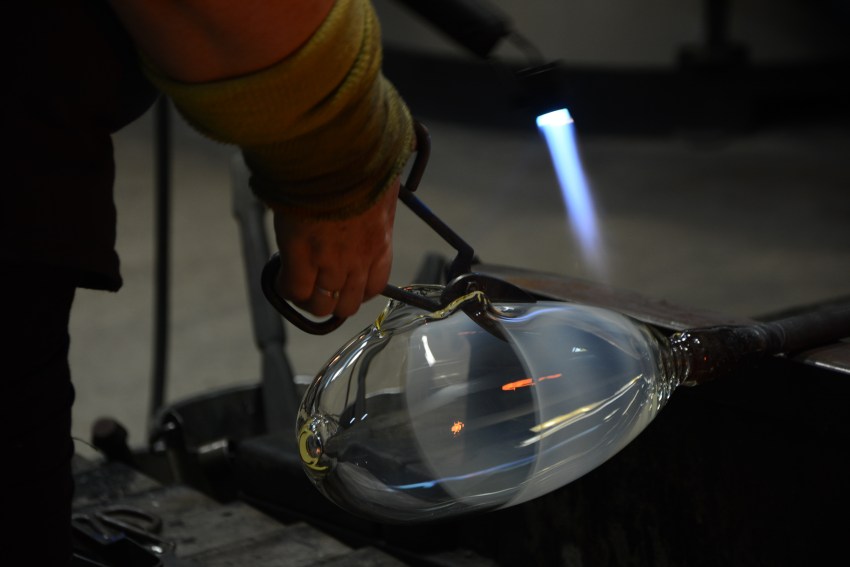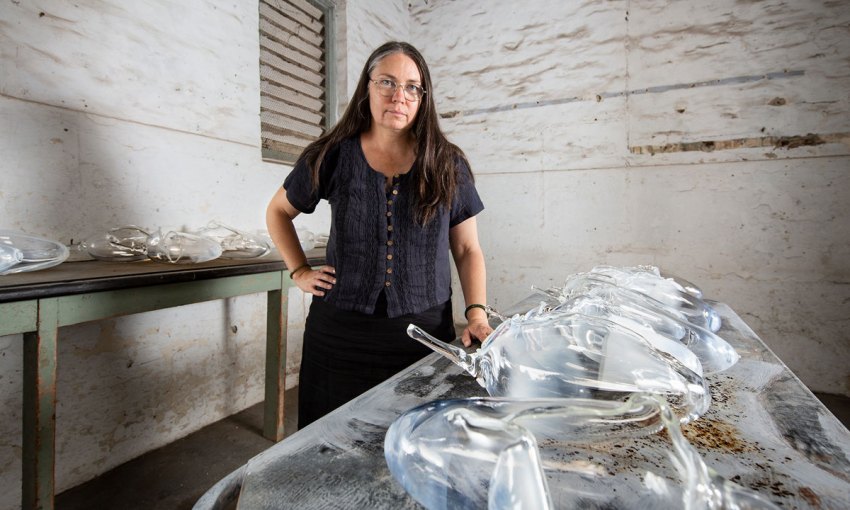The artists in the Adelaide Biennial of Australian Art are all exploring the idea of monsters, some a little too real for comfort.
Facing demons in the 2020 Adelaide Biennial
The look on Yhonnie Scarce’s face is contemplative as the glass is heated, blown and shaped, over and over again.
The Woomera-born Kokatha and Nukunu artist is watching the final pieces of her upcoming exhibition come to creation.
“For me, it’s about being in the moment of the work being made and the reason they’re being created,” Yhonnie says.
There’s a trust between her and the glass blowers making the the pieces. Yhonnie works with JamFactory head of glass studio Kristel Britcher and her assistant Drew Spangenberg in a comfortable silence.
The form is perfected and then comes the most important part of the process. Kristel takes scissors to the searing material, incising the perfectly oval piece until it becomes broken, the edges withering.

There’s a haunting thread that runs between the creation of the pieces and the acts that inspired them.
For the 2020 Adelaide Biennial, from February 29, Yhonnie is exploring the theme of monsters, like all the other artists involved. Her personal demon this time around is William Ramsay Smith. The Scottish physician was appointed city coroner in 1896, inspector of anatomy and chairman of the Central Board of Health. His main interest was post-mortem research and he used his position to illicitly dissect and remove human remains.

Smith is acknowledged as one of the most prolific colonial collectors of Aboriginal bones and soft tissue. His collection was made up of up to 600 Aboriginal people and in 1903, an enquiry was launched into his behaviour.
He was suspended from his coronial duties, but was later cleared and his research commended; he retired in 1929.
And where did these horrific acts occur? A place Yhonnie says South Australians have probably unknowingly strolled past countless times — the Adelaide Botanic Garden.
She’s returning to the scene of the crime for the exhibition, giving the show even more impact. To view the pieces, the public will be able to step into the Dead House. It was built in 1882 and was used as the Adelaide Lunatic Asylum’s morgue to store cadavers and perform autopsies until 1906.

When people walk into the eerie space, they’ll see Yhonnie’s trademark imagery of traditional Australian bush vegetables, reimagined to resemble dismembered body parts. She hopes the milky-coloured pieces, along with the setting, will make people feel something for those whose bodies were so immorally used and, she says, sometimes sent overseas, robbing their ability to rightfully lay to rest.
“The reason I chose to use an alabaster colour is because it has that ghostly appearance and it chooses to do what it wants. The exhibition talks about the spirits that might be left behind in the space and telling their stories. This is about the horrific history and wanting to call these perpetrators out and making them accountable.
“I think it’s time that people were made aware of what may have happened in the Dead House.”
The Adelaide Biennial of Australian Art will run from February 29 to June 8, 2020.



